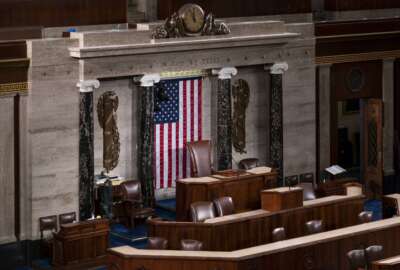Federal checkbook balance off by $1.3 trillion?
A watchdog group has uncovered massive reporting errors in data on USASpending.gov. The Sunlight Foundation says that accounts for half of the government spendi...
By Vyomika Jairam
Internet Editor
FederalNewsRadio.com
A federal watchdog group says it’s found more than $1.3 trillion worth of bad data on USASpending.gov.
The finding comes from the Sunlight Foundation, which says that accounts for half of the government spending data reported last year. Sunlight has just launched a new Web site called ClearSpending.com, which is a scorecard on how agencies are reporting information for USASpending.gov.
Sunlight spent over a year looking at the reports on USASpending.gov, Web developer Kaitlin Lee said, and then evaluated the data on three metrics: Consistency, Completeness and Timeliness.
For the consistency metric, Sunlight’s program compared information that agencies provided to the Catalog of Federal Domestic Assistance (agencies are required to report annual obligations by program) and USASpending.gov. When the information didn’t match up, the program caught it.
Agencies are also required to report their obligations to USASpending.gov within 30 days, and the timeliness metric evaluated how often agencies met that. In fact, Lee said, Sunlight’s program gave agencies an additional 15 day grace period only noted when they exceeded 45 days.
The completeness checked how many of the fields the agencies completes in reporting each of their transactions.
“So the $1.3 trillion is actually all of the obligations from CFDA programs that failed at least one of these metrics,” Lee said.
However, a vast majority of these were consistency errors; the program was set up to check for inconsistencies first, then timeliness and completeness. Lee said that the timeliness and completeness metrics only accounted for $100 million of the $1.3 trillion figure.
While accuracy isn’t something that the program could catch or measure because of the way federal reporting is set up, Lee says the fact that the information being provided by agencies to both the CFDA and USASpending.gov isn’t the same is troubling.
“If we’re reporting these figures in two places, why can’t we at least be reporting the same number in both of them?” Lee said. “I feel like it’s an even more lenient metric than accuracy would be!”
Sunlight’s new ClearSpending.com site takes the data that fails any of the three metrics and allows users to access by agency and program. Users can then see where it failed the metrics and what the associated costs are. Programs are then placed into the following categories: over-reported; under-reported; not reported; late; incomplete.
“One of our main goals in tackling this is to identify non-reporting programs,” Lee said. “This is something that the GAO noted that OMB really had no way of capturing in their data quality analysis, and we thought it was something really important to look at.”
Sunlight hopes that by catching agencies which are non-compliant, the program also finds the agencies that are reporting well, and have them translate what they do to other agencies.
Copyright © 2024 Federal News Network. All rights reserved. This website is not intended for users located within the European Economic Area.





